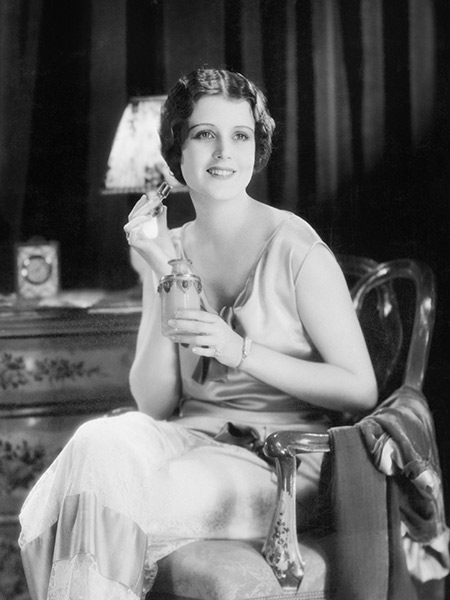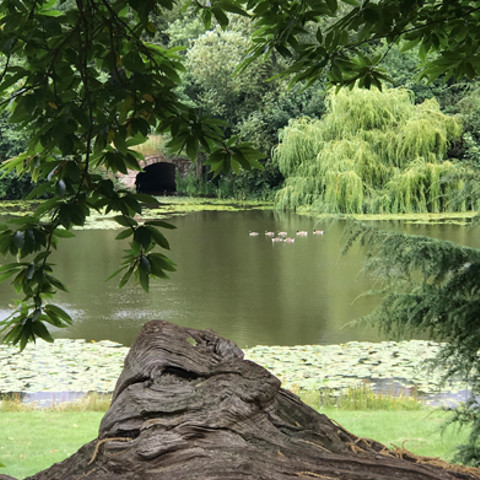28/12/2017
The Origins Of Perfumery
 On a trip to Pompeii in 2000 I visited the restored Perfumers House within the ruins of Ancient Pompeii where they had lovingly recreated perfumes based on residues found in bottles on the site near Naples, using the same methods used circa AD 79. The Rose Perfume I purchased there forever remains my favourite scent. It had a depth and subtlety in equal measure that I have never found again after all these years. So I wondered why and set out to discover the answer.
On a trip to Pompeii in 2000 I visited the restored Perfumers House within the ruins of Ancient Pompeii where they had lovingly recreated perfumes based on residues found in bottles on the site near Naples, using the same methods used circa AD 79. The Rose Perfume I purchased there forever remains my favourite scent. It had a depth and subtlety in equal measure that I have never found again after all these years. So I wondered why and set out to discover the answer.
How Are Today’s Perfume’s Created
In modern perfume making, an alcohol is usually the carrier medium, with essential oils added for fragrance combined with fixatives, colouring agents and preservatives. Alcohols evaporate much more quickly than oils do, thus dispersing scent into the air more rapidly. Today’s more expensive fragrances mostly use natural products and essential oils gathered from flowers, spices and fruits. Cheaper versions use synthesised oils that try to emulate these natural scents, so it’s no wonder there is a marked difference between the two.
How Was Perfume Made In Roman Times?
In the ancient world, oils were used as the carrier medium for perfumes. An ancient perfume would therefore be more subtle and you’d have to be closer to the skin of the wearer to feel its heady power. This was exactly my experience.
What Were The Main Ingredients Used?
There are only a few ingredients for making perfume as the ancients did: basically olive oil, a pestle and mortar and a few plant based ingredients. In Ancient Greece and Rome, the abundance of olive oil made it the most popular oil for the perfume industry, although other oils such as almond were popular as well. Cheaper oil was better (and still is) because it has less of its own scent to compete with the fragrant materials added. To impart fragrance, plant-based ingredients were used, including flowers, leaves, herbs, seeds, woods, resins and gums. Popular choices included Rose, Cyprus, Violet, Lily, Myrtle and Basil. Animal-derived ingredients were also common, such as musk and civet, which are the glandular oils produced by the musk deer and the civet cat, as well as ambergris, a strange substance secreted and occasionally expelled by sperm whales. These aromas tend to be pungent and even unpleasant in their natural state but act as fixatives in combination with other scents, accentuating them and making them last longer without imparting their own scents to the mixture.
Composition Of A Great Perfume
Perfume is formulated by layering scents and based on how quickly they evaporate. Top notes are the first scent you smell in a perfume and evaporate quickly. Popular Top notes were Marjoram, Anise and Coriander. Middle or Heart notes form the main body of the perfume and Base notes hold and blend the other ingredients and stay on the skin the longest whilst always smelling them in combination with the other aromas of the perfume.
How To Re-Create Your Very Own ‘Ancient Rose Perfume’
Starting with the Base note, it is possible to purchase the essential oil versions of any or all of these rather pungent substances. When creating your own perfume only use one Base and in very small quantities (2-3 drops of their ready-to-use essential oil version, in 2oz of olive oil). The caution is that these are very strong scents and can quickly overpower and ruin your final perfume. Men’s colognes tend to use more in quantity of one Base or maybe two Bases for something with a bit more oomph! Middle notes include many that are still commonly used today; rose, cinnamon, benzoin (also known as styrax in ancient times) and calamus (also known as sweet flag and sweet rush). A carrier oil such as olive or almond is essential but when you do add your rose petals to olive oil only use 1-3 petals otherwise its scent will overwhelm your final mix. Next your Middle note and for this I choose Cinnamon which can be added by breaking up cinnamon sticks into small pieces or even by shaking ground cinnamon into your oil.
HUBBLE, BUBBLE, TOIL And….. HEY PRESTO, PERFUME!
To finish the perfume you need to heat your oil with its added components. Place the oil and spice mixture into a glass or ceramic dish, then sit the dish into a couple of inches of water that has already been heated to boiling point in a pot, turning off the heat and leave until cool. This process draws the scent out into the oil. The mixture should steep for 24 hours before being strained through a cheesecloth and wrung out. It is a brilliant way of capturing all the little bits and pieces used from your final perfume creation.



 On a trip to Pompeii in 2000 I visited the restored Perfumers House within the ruins of Ancient Pompeii where they had lovingly recreated perfumes based on residues found in bottles on the site near Naples, using the same methods used circa AD 79. The Rose Perfume I purchased there forever remains my favourite scent. It had a depth and subtlety in equal measure that I have never found again after all these years. So I wondered why and set out to discover the answer.
On a trip to Pompeii in 2000 I visited the restored Perfumers House within the ruins of Ancient Pompeii where they had lovingly recreated perfumes based on residues found in bottles on the site near Naples, using the same methods used circa AD 79. The Rose Perfume I purchased there forever remains my favourite scent. It had a depth and subtlety in equal measure that I have never found again after all these years. So I wondered why and set out to discover the answer.